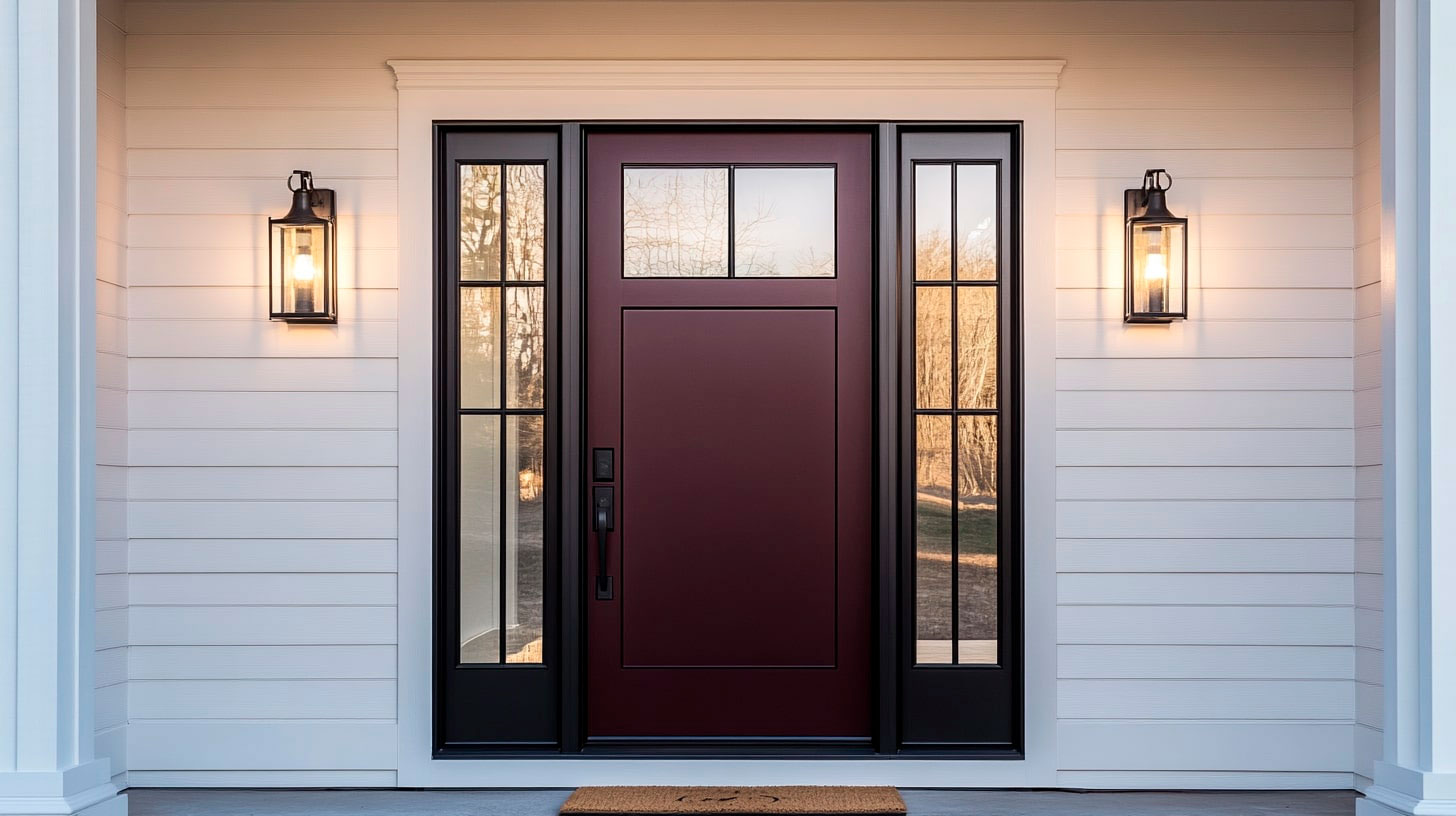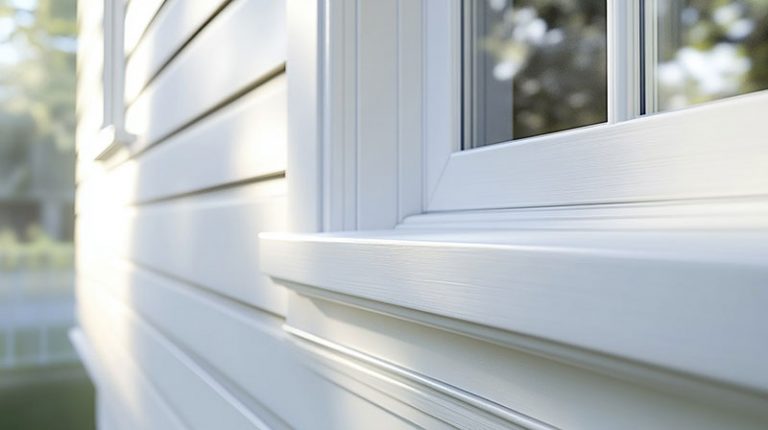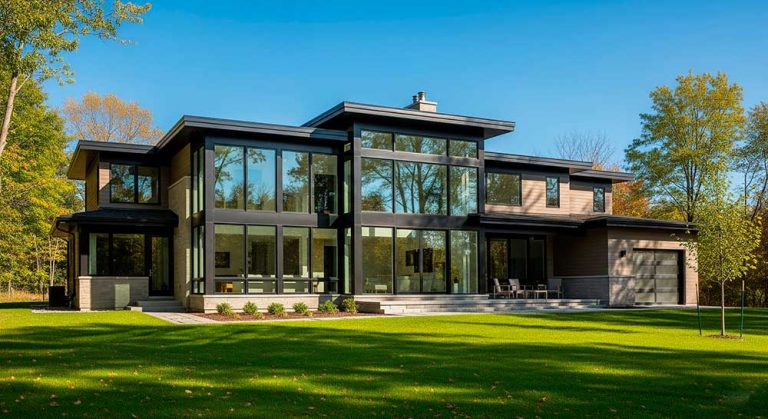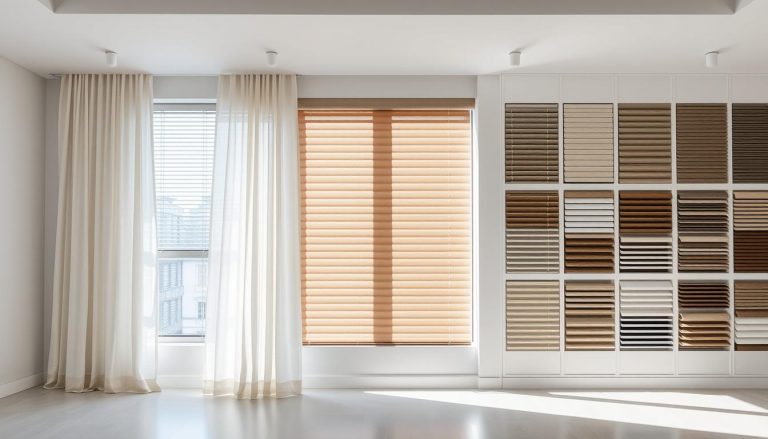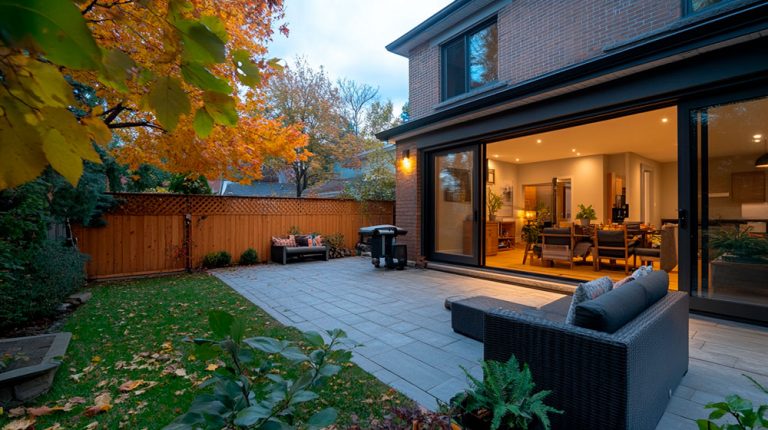When it comes to home improvement projects, door sizing might not be the most exciting topic, but it’s certainly one of the most crucial. As a Project Manager at Total Home Windows and Doors, I’ve seen firsthand how the right door size can make or break both the functionality and aesthetics of a home.
"Many homeowners underestimate the importance of proper door sizing until they're faced with a door that doesn't fit properly or compromises their space. Getting it right the first time saves headaches and expenses down the road." - Cherry Jian, Sales Consultant
Window Replacement Near Me
Understanding Door Measurements
Before diving into specific standard sizes, let’s break down the three primary dimensions you need to understand:
- Height – Measured from the bottom to the top of the door slab
- Width – Measured from one side of the door panel to the other
- Thickness – Measured from the front to the back face of the door
These measurements are crucial regardless of whether you’re installing an interior door for a bedroom or an exterior door for your entryway.
How to Accurately Measure Doors
Using a Tape Measure
To get accurate door measurements:
- For width, measure horizontally from one inner edge of the door frame to the opposite inner edge.
- For height, measure vertically from the floor (under the door) to the top of the door opening.
- For thickness, measure the edge of an existing door.
Measuring Existing Door Frames
When measuring an existing door frame:
- Take three width measurements: at the top, middle, and bottom of the frame.
- Take three height measurements: at the left, center, and right of the frame.
- Use the smallest measurements to ensure your new door will fit.
Factors Influencing Door Sizes
Local Building Codes in the Greater Toronto Area
Ontario Building Code regulations impact door sizes, particularly for:
- Minimum width requirements for egress
- Fire-rated door specifications
- Accessibility requirements in multi-unit buildings
Canadian Accessibility Standards
The Canadian Standards Association provides guidelines that influence door sizing:
- Clear width requirements of at least 32 inches
- Maneuvering clearances around doors
- Maximum force required to operate doors
Architectural Design Considerations
Different architectural styles often feature different door sizes:
- Heritage homes may have taller, narrower doors
- Modern designs often incorporate wider doors
- Custom homes may feature non-standard sizes as statement pieces
Natural Light and Space Optimization
Door size and style impact the amount of natural light entering interior rooms:
- French doors maximize light between rooms
- Wider doors create a more open feeling
- Doors with glass inserts bring light into darker spaces
Standard Interior Door Sizes
Typical Bedroom Door Sizes
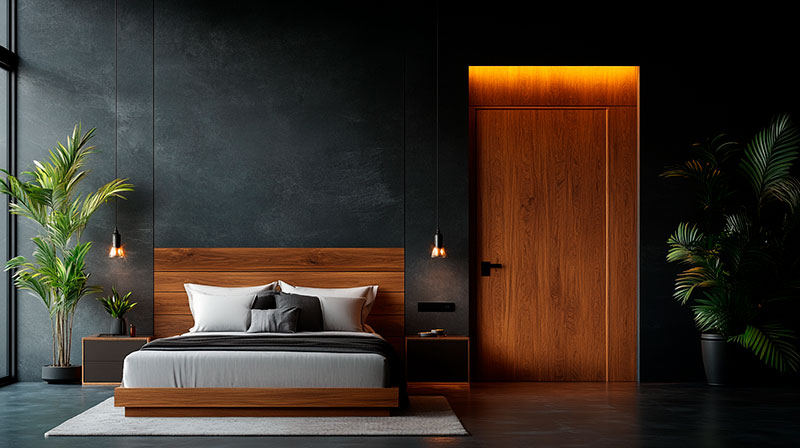
In Canadian homes, the standard height for bedroom doors is 80 inches (or 6’8″). While height is fairly standardized, width can vary depending on the room and home design:
| Door Type | Standard Width (inches) | Standard Height (inches) |
| Bedroom | 30, 32, 36 | 80 |
| Master Bedroom | 32, 36 | 80 |
The most common width for bedroom doors is 32 inches, but older homes may have narrower doors at 30 inches, while newer constructions often feature wider 36-inch doors.
Bathroom Door Dimensions

Bathroom doors typically follow the same height standard (80 inches) but may have different width considerations:
| Bathroom Type | Common Width (inches) | Standard Height (inches) |
| Full Bathroom | 28, 30, 32 | 80 |
| Half Bathroom | 24, 28 | 80 |
"For bathrooms, we often recommend a minimum 30-inch door width for comfortable access. However, in older homes or small spaces, we sometimes see 24 or 28-inch doors. While these work, they can feel cramped and limit accessibility." - Daniel Klein, Project Manager
Closet Door Sizes
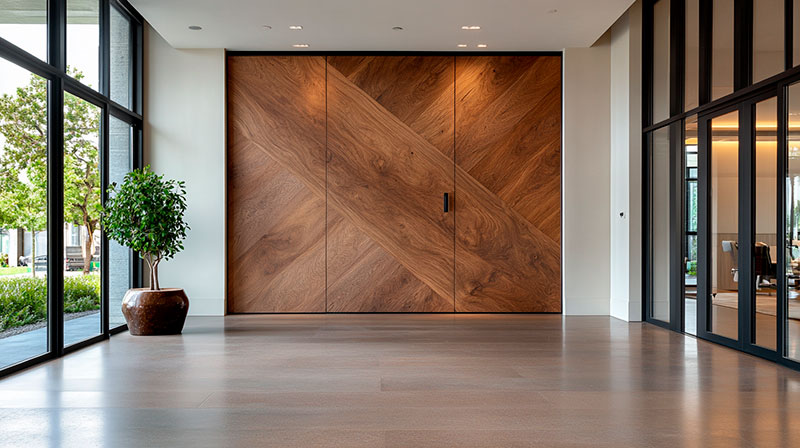
Closet doors come in various configurations with different standard sizes:
| Closet Door Type | Common Width Range (inches) | Standard Height (inches) |
| Bifold | 24-72 (per pair) | 80 |
| Sliding | 48-96 (full opening) | 80 |
| Traditional Swing | 18-36 | 80 |
Bifold doors are popular for closets because they don’t require swing space, while sliding doors are excellent for larger closets and spaces where a swing door would be impractical.
Utility Room Door Considerations

Utility room doors often need to accommodate equipment movement and may require wider dimensions:
| Utility Door Type | Recommended Width (inches) | Standard Height (inches) |
| Laundry Room | 30-36 | 80 |
| Furnace Room | 32-36 | 80 |
| Storage Room | 30-36 | 80 |
Standard Exterior Door Sizes

Your entry door makes a significant first impression and contributes to your home’s curb appeal. In Canada, these are the standard sizes:
| Entry Door Type | Standard Width (inches) | Standard Height (inches) | Standard Thickness (inches) |
| Front Door (Single) | 32, 34, 36 | 80, 84 | 1¾ |
| Side/Back Entry | 32, 34, 36 | 80 | 1¾ |
| Double Front Doors | 60-72 (total width) | 80, 84 | 1¾ |
At Total Home Windows and Doors, we offer a range of steel doors starting from $1,500 up to $5,000, and fiberglass doors ranging from $2,500 to $10,000, depending on size, style, and features.
Side Entry and Back Door Variations
Side and back entry doors typically follow the same standard sizes as front doors, though they’re more commonly 80 inches in height rather than the taller 84-inch option sometimes used for grand front entrances.
Double Door Configurations
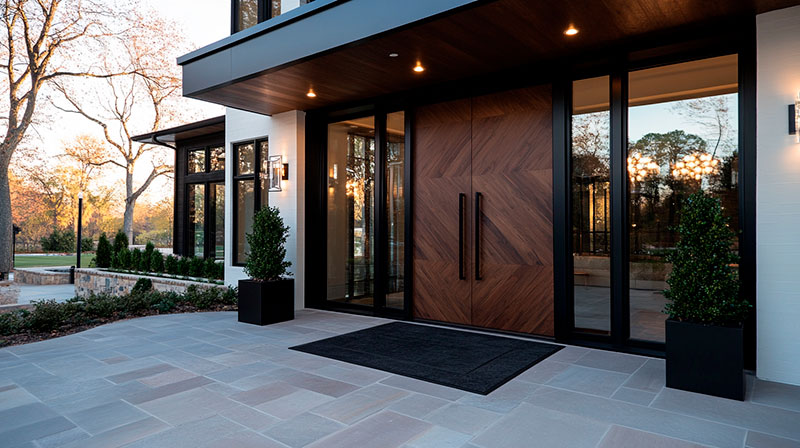
Double doors create an impressive entrance and are ideal for moving large furniture. The standard combined width ranges from 60 to 72 inches (typically two 30″, 32″, or 36″ doors), while maintaining the standard 80″ or 84″ height.
French Door Sizing
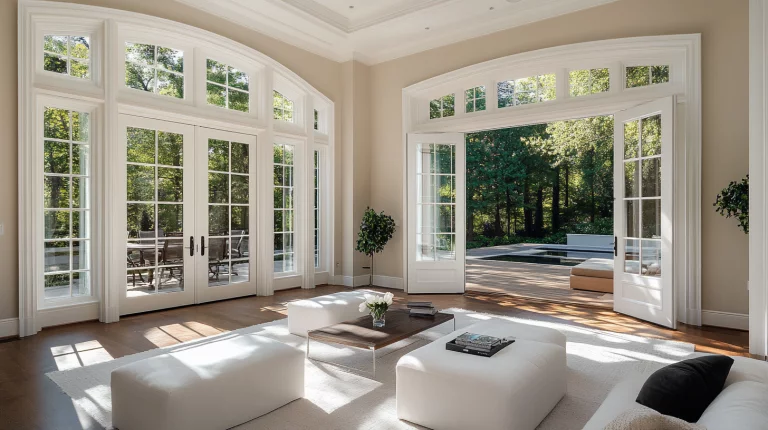
French doors add elegance while providing excellent access to outdoor spaces:
| French Door Configuration | Standard Width (inches) | Standard Height (inches) |
| Single French Door | 30, 32, 36 | 80, 84 |
| Double French Doors | 60, 64, 72 (combined) | 80, 84 |
Visit our garden doors gallery to see examples of beautiful French door installations. Our garden doors typically range from $3,500 to $5,000.
Sliding Patio Door Dimensions

Sliding patio doors are popular for their space efficiency and large glass areas:
| Sliding Door Type | Standard Width Range (inches) | Standard Height (inches) |
| 2-Panel Standard | 60, 72, 96 | 80, 82 |
| 3-Panel Wide | 108, 120 | 80, 82 |
| 4-Panel Extra Wide | 144, 192 | 80, 82 |
For inspiration, check out our sliding doors gallery. Our vinyl patio doors start at $1,500 and can go up to $5,000 for premium models.
Custom vs. Standard Door Sizes
When to Choose Standard Sizes
Standard door sizes are preferable when:
- You’re working within a tight budget
- You’re replacing an existing door in a standard opening
- Time is a factor (standard sizes are readily available)
Benefits of Custom Door Manufacturing
Custom doors become necessary when:
- Your home has non-standard openings
- You’re creating a unique architectural statement
- Accessibility needs require specialized dimensions
“At Total Home, we can manufacture custom vinyl windows to fit any opening. With our production capacity of 150 windows per day and 60,000 square feet of warehouse space, we’re equipped to handle custom orders efficiently.” – Alexandr Naumov, Project Manager
Matching Door Sizes to Room Functionality
| Room Type | Recommended Door Width (inches) | Considerations |
| Main Entry | 36 | Furniture access, statement piece |
| Bedroom | 32-36 | Privacy, furniture access |
| Bathroom | 28-32 | Privacy, space constraints |
| Closet | 24-36 | Access to contents, space saving |
| Utility Room | 30-36 | Equipment access |
Ready to find the perfect doors for your home?
Contact us for a free consultation with one of our experienced consultants. We’ll help you navigate standard sizes, custom options, and find the perfect solution for your space.
Frequently Asked Questions
What is the standard door width for interior doors in Canadian homes?
The standard door width for interior doors typically ranges from 28 to 36 inches, with 32 inches being the most common. Bedroom doors are usually 32 inches wide, while bathroom doors might be slightly smaller at 28 or 30 inches.
How thick are standard residential doors?
Standard interior doors are typically 1⅜ inches thick, while exterior doors are thicker at 1¾ inches for better insulation and security. Door thickness is crucial for proper fit within frames and for accommodating hardware like hinges and locks.
Are there hard and fast rules about door sizes I need to follow?
While building codes provide minimum requirements, there aren’t hard and fast rules that apply to every situation. Local regulations, accessibility needs, and architectural preferences all influence appropriate door sizing for your specific project.
How can I ensure my new door will fit perfectly in the existing frame?
To ensure your door fits perfectly, measure the width and height at multiple points (top, middle, bottom), use the smallest measurements, account for door stops, and check if the frame is square by measuring diagonally from corner to corner in both directions.
When should I consider installing a smaller door than the standard size?
Consider a smaller door when working with limited space, retrofitting historic homes with non-standard openings, creating access to utility areas where full-size doors aren’t necessary, or when renovating spaces with size constraints.
How do I determine the right size door for unusual spaces?
Determine the right size door by measuring the available wall space, considering furniture placement, accounting for door swing clearance, and evaluating traffic flow patterns. Sometimes custom sizes are necessary for the proper fit in unusual spaces.
What's the most important factor in ensuring a proper fit for a new door?
The most important factor for a proper fit is accurate measurements of both the door opening and the frame, accounting for any irregularities in the walls, ensuring the frame is square, and considering clearances for flooring and operational swing.
Are door size standards different for commercial buildings versus homes?
Yes, commercial buildings often have wider doors (minimum 36 inches) to accommodate higher traffic and accessibility requirements. Commercial doors also typically have different fire ratings, hardware requirements, and must comply with stricter building codes.
What's the best way to measure carefully for a replacement door?
Measure carefully by removing trim to access the actual rough opening, measuring width at three points (top, middle, bottom), measuring height at both sides and middle, checking for squareness, and accounting for threshold height and flooring differences.
What is the standard door height in Canadian homes?
The standard door height in Canadian residential construction is 80 inches tall (6’8″). Some upscale homes feature taller doors at 84 inches (7′) or even 96 inches (8′) for a more dramatic aesthetic, particularly for front entryways.
How do the Americans with Disabilities Act requirements affect door sizes?
While Canada follows its own accessibility standards rather than the American Disabilities Act, similar principles apply. Accessible doorways need a minimum clear width of 32 inches, which typically requires a 36-inch door to accommodate the door thickness and hardware.
What are the standard front door sizes for Canadian homes?
Standard front door sizes in Canada are typically 36 inches wide by 80 inches tall with a thickness of 1¾ inches. Grand entrances might feature 42-inch widths or 84-inch heights, while double doors usually total 60-72 inches in combined width.
How do exterior door dimensions differ from interior ones?
Exterior doors are generally wider (34-36 inches) and thicker (1¾ inches) than interior ones, which are often 28-32 inches wide and 1⅜ inches thick. Exterior doors also typically have different insulation requirements and weather-sealing needs.
Why are bathroom doors often slightly smaller than other interior doors?
Bathroom doors are often slightly smaller (28-30 inches wide) to accommodate the typically smaller room size while maximizing available wall space for fixtures and vanities. This size still allows comfortable access while optimizing the bathroom’s layout.
Can I install a door taller than the standard 80 inches height?
Yes, you can install doors taller than the standard 80 inches tall, but this usually requires modifying the wall opening, header, and frame. Taller doors (84-96 inches) create a dramatic effect and are becoming increasingly popular in modern home design.
Are there fast rules for door clearances I should follow?
While there aren’t fast rules that apply universally, good practice includes allowing at least 1/16 to 1/8 inch clearance on the sides and top of the door, and 3/8 to 1/2 inch at the bottom for proper operation over flooring. Adjustments may be needed based on specific situations.

